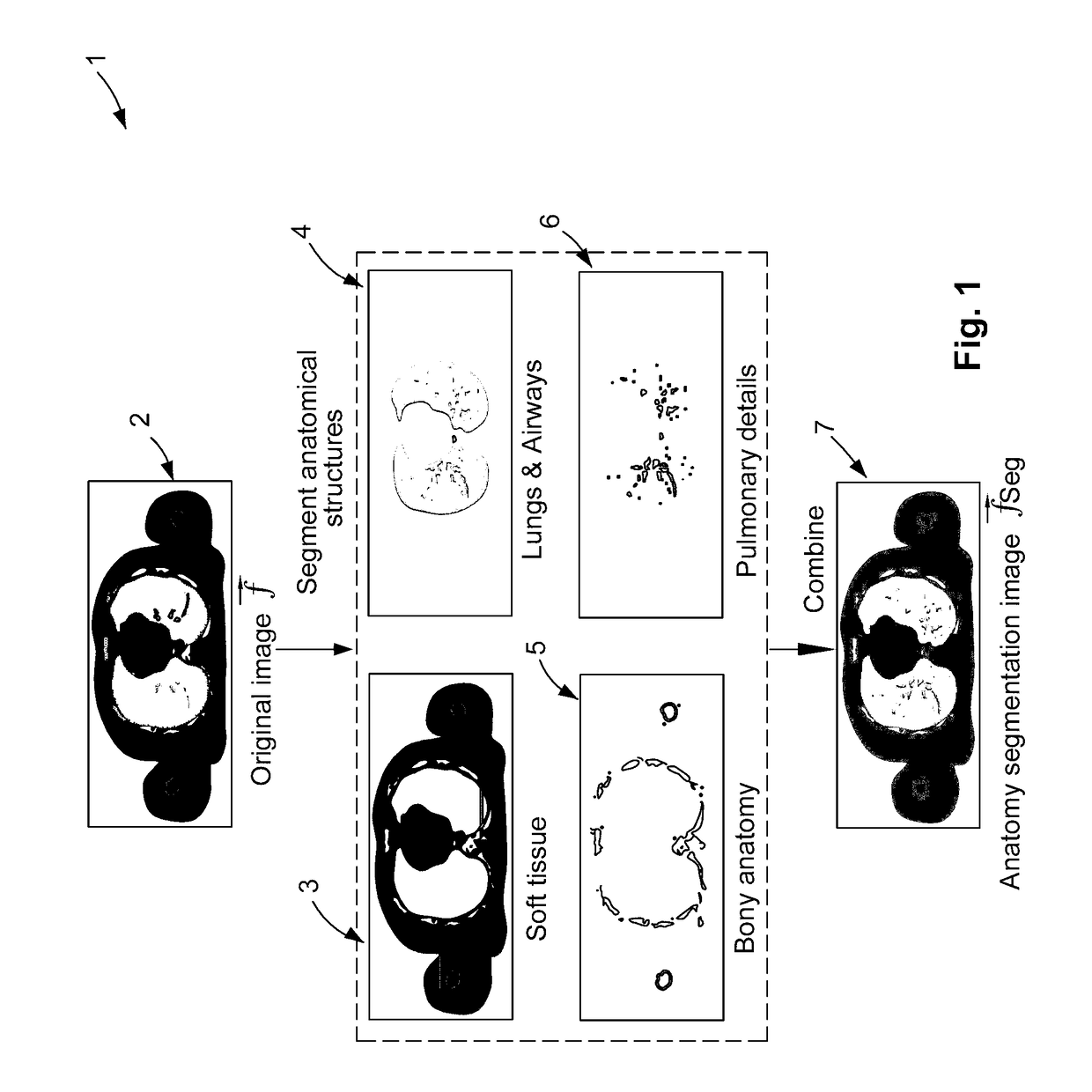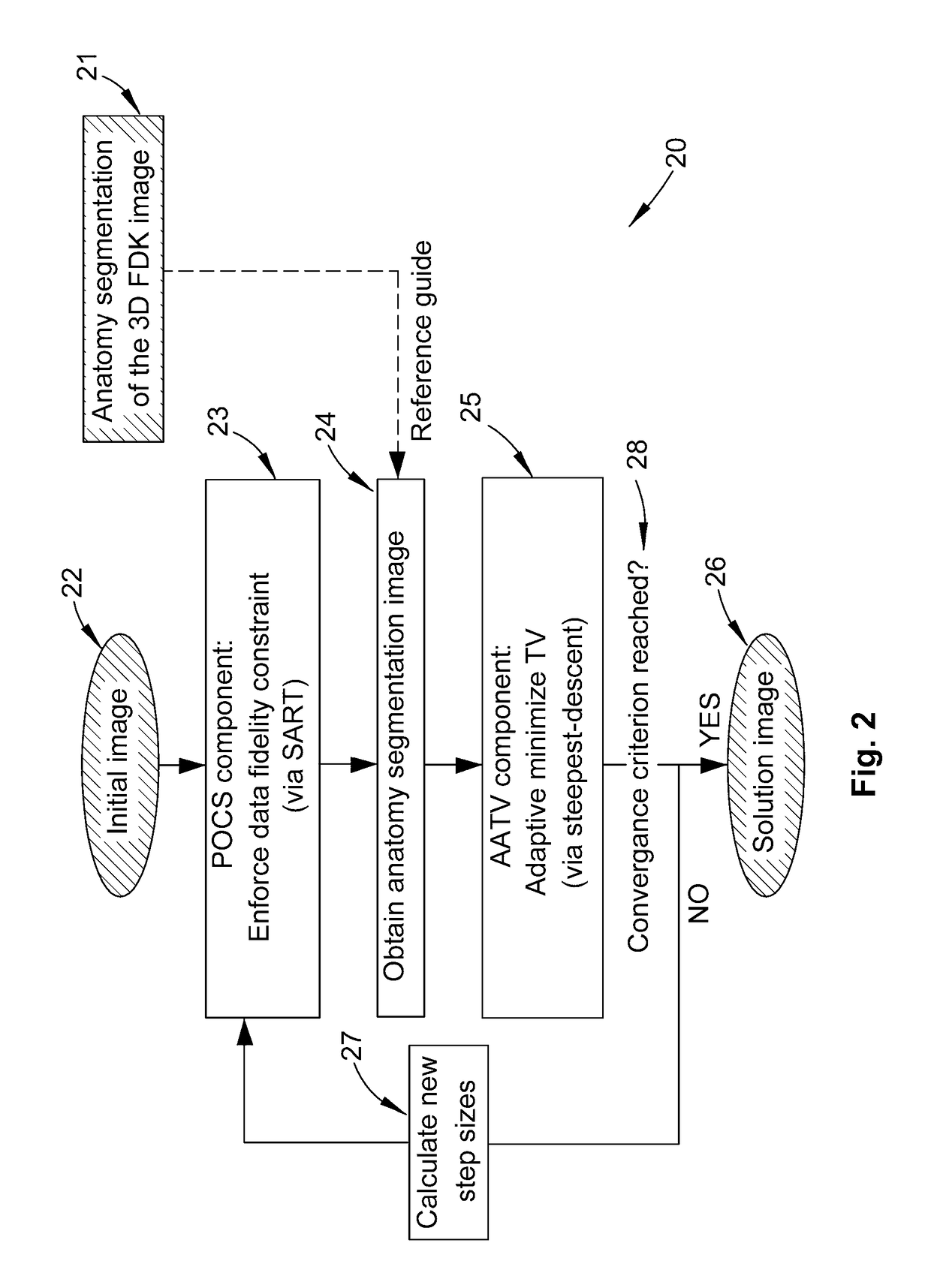Thoracic imaging for cone beam computed tomography
- Summary
- Abstract
- Description
- Claims
- Application Information
AI Technical Summary
Benefits of technology
Problems solved by technology
Method used
Image
Examples
Embodiment Construction
[0034]The preferred embodiment provides for the use of a 4D CBCT anatomy segmentation prior that can considerably improve 4D CBCT image reconstruction. The preferred embodiment provides a novel CS based thoracic 4D CBCT image reconstruction algorithm that improves on the blurry anatomy and low computational efficiency of conventional TV minimization methods. The preferred embodiment, referred as the anatomical-adaptive compressed sensing (AACS) algorithm, is based on the ASD-POCS framework, but with a novel anatomical-adaptive TV minimization component that utilizes a thoracic 4D CBCT anatomy segmentation method. The theory, implementation and performance evaluation of AACS is described hereinafter. The AACS is demonstrated with the reconstructions of a digital phantom and a patient scan, and compared qualitatively as well as quantitatively to FDK, ASD-POCS, and PICCS. Finally, the limitations and potential future developments of AACS are discussed.
[0035]The Feldkamp-Davis-Kress (FD...
PUM
 Login to View More
Login to View More Abstract
Description
Claims
Application Information
 Login to View More
Login to View More - R&D
- Intellectual Property
- Life Sciences
- Materials
- Tech Scout
- Unparalleled Data Quality
- Higher Quality Content
- 60% Fewer Hallucinations
Browse by: Latest US Patents, China's latest patents, Technical Efficacy Thesaurus, Application Domain, Technology Topic, Popular Technical Reports.
© 2025 PatSnap. All rights reserved.Legal|Privacy policy|Modern Slavery Act Transparency Statement|Sitemap|About US| Contact US: help@patsnap.com



